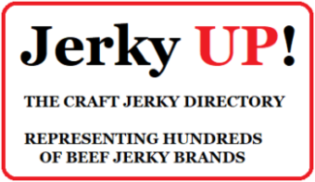How It’s Made Beef Jerky
Duke’s Beef Jerky on How It’s Made
If your craving a meaty snack that packs a good dose of protein, then some beef jerky might just be the ticket. Eating dried, cured stripes of meat dates back to the ancient cultures of south America and it’s thought that jerky maybe an English mispronunciation of a native word for burned meat.
Beef jerky is no longer a food of subsistence, it’s now a popular snack food that comes in a variety of flavors.
The process starts with beef rounds, a lean cut from the muscular hind quarter of the cow. There is just a bit of fat, enough to give the meat good flavor. Workers put the beef rounds through a slicer which cuts them in to thin stripes of identical width, so that the jerky pieces come out as uniform as possible. The direction in which the slicer cuts as well as the thickness of the slices are calculated to optimize flavor and tenderness. The marinating will further tenderize the meat.
Some producers inject the marinade prior to slicing. This company marinates after slicing, so that the marinade is sure to tenderize and flavor every slice. After loading the small batch of meat in to a rotating drum, the marinade is added. A secret recipe, comprising both dry and liquid seasonings. The meat and marinade spin together for over an hour and by the time the stripes come out of the drum, there soaked in marinade. Another twenty four hours in the marinade and there ready to go in to the smokehouse.
Workers lay the marinated beef stripes on to stainless steel rods, there spaced well apart to allow the hot air to penetrate from all angles. Once they fill a rod they hang it on a rolling rack, a rack holds 100 rods, roughly 110 kg. of beef strips. Each rack goes in to it’s own individual smokehouse, inside which two simultaneous process a cur, water soaked hardwood chips burn, slowly smoking the meat and the jerky also cooks slowly at low heat no higher than 82 degrees Celsius. The variety of beef jerky dictates the type of hardwood they use, for example, sweeter flavors such as honey barbeque or teriyaki require smoke with hickory or apple wood. Whereas for more savory or spicy flavors they use mesquite wood.
Over the course of 5 to 7 hours in the smokehouse the circulated warm air gradually dries out and cures the meat and the smoke from the wood infuses it with flavor. Samples are taken from each fully smoked batch to measure the thickness the required thickness is 3 to 4 milometers. After the strips have been cut to approximately 8 centimeters long, the jerky enters an automated scale, which weighs out the quantity per packet.
Meanwhile an automated packaging machine heat seals the bottom and sides of printed plastic film forming a pouch then inserts a reseal able zip, then it prints on the batch number and best buy date. The machine then pulls apart each individual pouch and flushes the inside with nitrogen, nitrogen forces out fresh foods worst enemy, oxygen. Then the machine drops in additional ammunition, that tiny oxygen absorbing packet you find. Now the pouch is ready to receive it’s beef jerky.
In the smokehouse the raw beef lost about 3/4 of it’s weight as the moisture inside evaporated and the fat cooked off. The sealed pouches are now moved to the boxing and shipping area. Every 5 minutes quality control technicians take a sealed pouch off the line to measure the nitrogen and oxygen levels inside. earlier on they tested samples from every single batch coming out of the smokehouse to make sure the slow cooking process killed off all of the bacteria in the beef and dried it sufficiently.
The jerky can have a shelf life of 14 months, there’s food for thought, chew on that!
